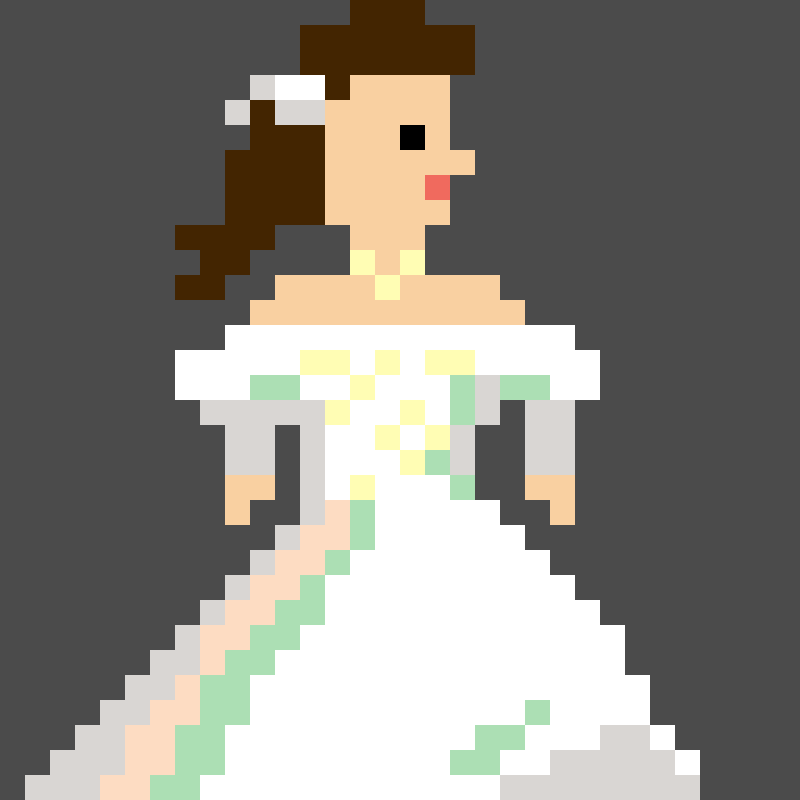For one of our projects in our art and technology course, we created animated GIF using using Piskelapp.com. I found the process to be fairly easy to create and edit, having no previous experience creating pixel art nor animations. I based my image on the character of "Sarah" from my favorite movie Labyrinth. She is "walking" in her ballgown she wears in one of the scenes. Her hair sways back and forth as she steps, and the "sequins" on her dress change with her movements as if shining in the light. I found this very similar to stop motion animation, but with a digital twist. I feel that my future students would really enjoy this simple to use program, and it would teach them the basics of animation with a vintage flair, since it is reminiscent of the pixel animations used in old video games such as Super Mario Bros. It modifies the traditional animation practices of pencil and paper or claymation by adding in the computer element.
Art & Technology - Stop Motion and Autoethnography
"Arts based reasearch & autoethnography share many of the same aims, including blurring boundaries between the social sciences and the humanities, utilizing forms of creative expressions and the inclusion of the researcher as the subject" (Blair, 2014).
When I was in my first semester of grad school, we had to create an autoethnography of our lives so far, which incorporated not just "navel gazing" as my professor put it, but also a look at the world around us and how it has shaped who we are and the decisions we make. The entire experience was reflexive - it changed the way I feel about the way I view myself and the people around me. Below is the autoethnography I made for myself using Adobe Spark:
Autoethnographic research doesn't just give you a better understanding of people, it can also inform the way you create and look at art. As an art educator, using autoethnography, especially at the high school level, can connect students to their work and make them more confident in the choices they make and as artists in general. Incorporating technology and art with the creation of autoethnography can greatly redefine the way a traditional autobiography might be made, with the written word on paper. It involves not just the critical examination of a life and its privilege and disadvantage, but also takes the story of a life and puts it into a visual, highly engaging form. Below is an animated autoethnography I found on You Tube. Animation gives the autoethnographic project an added element of art and also allows the creator to get a little more personal by removing the direct biographical element as in video, imagery and voice:
Reference:
Jeremy Michael Blair (2014) Animated Autoethnographies: Stop Motion Animation as a Tool for Self-Inquiry and Personal Evaluation, Art Education, 67:2, 6-13


